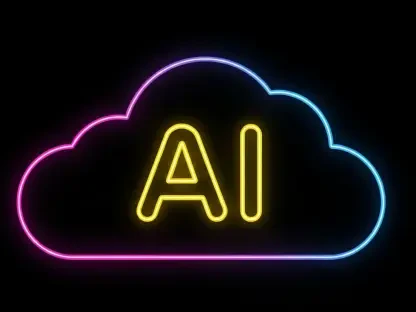In the swiftly advancing digital realm, the emergence of NLWeb by Microsoft and its collaborators signals a significant evolution in AI-driven web interactions. With its pioneering integration of natural language interfaces with websites, NLWeb is poised to fundamentally reshape user experiences. This market analysis explores the long-term impact of NLWeb on the AI web interaction landscape, focusing on its transformative role and future market predictions.
Setting the Stage for Transformative AI Integration
As technology and digital interfaces continue to evolve, NLWeb’s introduction highlights critical shifts in web interactions. With a natural language-driven framework, NLWeb seeks to enhance and replace traditional web navigation methodologies. This shift demonstrates a crucial development in making web content more accessible and intuitive. By evaluating the utility and scalability of NLWeb as an open-source project, industry players can engage more actively in designing accessible digital environments.
Evaluating Market Trends and Technological Advances
Historical and Current Technological Evolution
The progression toward integrating natural language processing (NLP) into web interfaces isn’t new, yet NLWeb has set a new benchmark. Over the years, foundational technologies like HTML and Schema.org have supported this transition, standardizing web content for machine processing. By leveraging these developments, NLWeb capitalizes on the groundwork laid for AI integration, offering a seamless transition to a more interactive web environment. Understanding these historical underpinnings is crucial for stakeholders aiming to harness NLWeb’s potential.
The Model Context Protocol: Driving AI Web Interactions
Central to NLWeb’s capabilities is the Model Context Protocol (MCP), a transformative technology poised to redefine AI communications on the web. MCP facilitates seamless information exchange between AI systems, marking the advent of what is known as the “agentic web.” By utilizing MCP, NLWeb empowers more efficient and customized user interactions, surpassing the capabilities of generic chatbots. This is a strategic move for both cost-effectiveness and control over user engagement, making MCP a cornerstone of NLWeb’s success.
Overcoming Challenges in Integration
Although NLWeb’s potential is evident, deploying MCP within existing infrastructures remains challenging. The compatibility of MCP with established sites relying on structured data formats such as Schema.org is advantageous, but the transition requires strategic planning and resources. Despite these obstacles, the overwhelming benefits of enhanced query accuracy and user engagement underscore MCP’s promising potential in revolutionizing digital interactions. Industry trends suggest a shift toward AI-powered web experiences, where MCP’s inherent flexibility will be pivotal.
Future Prospects and Market Predictions
As the landscape of AI web interactions continues to transform, experts predict NLWeb will remain at the forefront of this change. Innovating upon existing frameworks, it is anticipated that NLWeb will harness advancements in natural language models and align with regulatory shifts to redefine industry standards. Microsoft’s open-source approach promises to foster collaboration, allowing developers worldwide to push the bounds of what AI-driven web interactions can achieve. The anticipated integration of complex AI management tools within NLWeb will play a crucial role in business operations, positioning it as a key driver of future interactive web environments.
Strategic Recommendations for Stakeholders
Reflecting on the market analysis, NLWeb’s development marks an essential shift in how businesses can leverage AI. By embracing NLWeb’s capabilities, organizations can significantly boost engagement, enhancing both the customer journey and site functionality. As digital ecosystems gravitate toward interactive solutions, utilizing NLWeb’s innovative approach to website navigation may yield a competitive advantage. Stakeholders are encouraged to consider the implications of NLWeb’s tools, leveraging its potential to optimize web interactions effectively.
In summary, NLWeb’s integration into web interactions has permanently altered the possibilities for user engagement and digital accessibility. By pioneering natural language interfaces, NLWeb represents a critical shift in AI technology application. As the digital landscape further embraces these innovations, the legacy of NLWeb will likely be characterized by its facilitation of seamless interactions and enhancement of user experiences across the web. The strategic exploration of its capabilities will define its long-term impact, and organizations should remain vigilant in integrating these transformative AI solutions.









